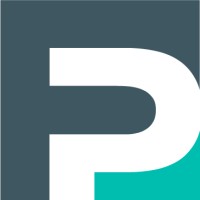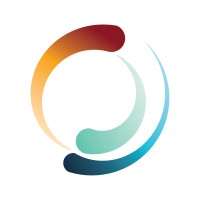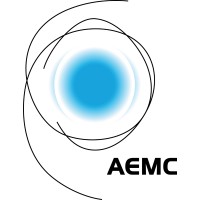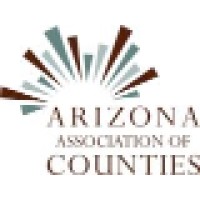Company Details
ct-association-for-community-action
1
17
921
cafca.org
0
CT _1272313
In-progress

CT Association for Community Action Company CyberSecurity Posture
cafca.orgCAFCA's members, Connecticut's 12 Community Action Agencies, continually strive to reduce the conditions of poverty through the identification and removal of social and economic barriers, the mobilization of community resources, advocacy, and the provision of direct services at the community level in all of the state's 169 cities and towns through cost-effective and community-based processes.
Company Details
ct-association-for-community-action
1
17
921
cafca.org
0
CT _1272313
In-progress
Between 700 and 749

 CACA Global Score (TPRM)
CACA Global Score (TPRM)XXXX



No incidents recorded for CT Association for Community Action in 2025.
No incidents recorded for CT Association for Community Action in 2025.
No incidents recorded for CT Association for Community Action in 2025.
CACA cyber incidents detection timeline including parent company and subsidiaries

CAFCA's members, Connecticut's 12 Community Action Agencies, continually strive to reduce the conditions of poverty through the identification and removal of social and economic barriers, the mobilization of community resources, advocacy, and the provision of direct services at the community level in all of the state's 169 cities and towns through cost-effective and community-based processes.


How do we analyse infrastructure investment? Step back. Look at the policy space. It is a dynamical system comprising the state, society and market (SSM). Focus on Africa: Within this SSM space, infrastructure investment is tethered to debt and the potential in public-private partnerships (PPP). The

Fay-Penn Economic Development Council's mission is to maintain and increase employment opportunities (jobs) in Fayette County in an effort to improve the quality of life for all of its residents. This mission is met through a comprehensive strategy of specific #economicdevelopment objectives. The or

Atlas Public Policy equips businesses and policymakers to make strategic, informed decisions that serve the public interest. Atlas builds analytical tools and dashboards using powerful, accessible technology, and offers expert advisory services to tackle the pressing issues of the day. Our key work

The Energy Policy Institute at the University of Chicago (EPIC) is confronting the global energy challenge by working to ensure that energy markets provide access to reliable, affordable energy, while limiting environmental and social damages. We do this using a unique interdisciplinary approach tha

The Australian Energy Market Commission (AEMC) provides advice to governments on energy market development and is the rule maker for Australian electricity and gas markets. We take a long-term view of what needs to be done to assure consumers of reliable, secure, electricity and gas services at the

The Arizona Association of Counties (AACo) is the only state organization that represents all county officials and the governments they serve in the State of Arizona. Founded in 1968, AACo provides essential services to the state's counties. AACo advances issues with the state and federal government
.png)
Misuse of information and communications technologiesThere is growing concern over the misuse of information and communications technologies (ICT) by...
The House has passed the uncontroversial PILLAR Act, opening the way for renewal of a well-reviewed cybersecurity grant program.
An overview of the National Institute of Standards and Technology (NIST) Cybersecurity Framework (CSF), including its development,...
Public power utilities across the country are working to create a more resilient and secure electric grid that appropriately manages the risk from a range of...
The corporate parent of Stop & Shop, Connecticut's largest supermarket chain, is reporting what it is calling a cybersecurity issue.
Timothy Geelan says his focus while leading the Connecticut Bankers Association will be to make sure every bank in the state has a voice.
Our HIPAA breach news section covers HIPAA breaches such as unauthorized disclosures of protected health information (PHI), improper disposal of PHI.

Explore insights on cybersecurity incidents, risk posture, and Rankiteo's assessments.
The official website of CT Association for Community Action is http://www.cafca.org.
According to Rankiteo, CT Association for Community Action’s AI-generated cybersecurity score is 745, reflecting their Moderate security posture.
According to Rankiteo, CT Association for Community Action currently holds 0 security badges, indicating that no recognized compliance certifications are currently verified for the organization.
According to Rankiteo, CT Association for Community Action is not certified under SOC 2 Type 1.
According to Rankiteo, CT Association for Community Action does not hold a SOC 2 Type 2 certification.
According to Rankiteo, CT Association for Community Action is not listed as GDPR compliant.
According to Rankiteo, CT Association for Community Action does not currently maintain PCI DSS compliance.
According to Rankiteo, CT Association for Community Action is not compliant with HIPAA regulations.
According to Rankiteo,CT Association for Community Action is not certified under ISO 27001, indicating the absence of a formally recognized information security management framework.
CT Association for Community Action operates primarily in the Public Policy Offices industry.
CT Association for Community Action employs approximately 1 people worldwide.
CT Association for Community Action presently has no subsidiaries across any sectors.
CT Association for Community Action’s official LinkedIn profile has approximately 17 followers.
CT Association for Community Action is classified under the NAICS code 921, which corresponds to Executive, Legislative, and Other General Government Support.
No, CT Association for Community Action does not have a profile on Crunchbase.
Yes, CT Association for Community Action maintains an official LinkedIn profile, which is actively utilized for branding and talent engagement, which can be accessed here: https://www.linkedin.com/company/ct-association-for-community-action.
As of November 27, 2025, Rankiteo reports that CT Association for Community Action has not experienced any cybersecurity incidents.
CT Association for Community Action has an estimated 1,026 peer or competitor companies worldwide.
Total Incidents: According to Rankiteo, CT Association for Community Action has faced 0 incidents in the past.
Incident Types: The types of cybersecurity incidents that have occurred include .
.png)
Angular is a development platform for building mobile and desktop web applications using TypeScript/JavaScript and other languages. Prior to versions 19.2.16, 20.3.14, and 21.0.1, there is a XSRF token leakage via protocol-relative URLs in angular HTTP clients. The vulnerability is a Credential Leak by App Logic that leads to the unauthorized disclosure of the Cross-Site Request Forgery (XSRF) token to an attacker-controlled domain. Angular's HttpClient has a built-in XSRF protection mechanism that works by checking if a request URL starts with a protocol (http:// or https://) to determine if it is cross-origin. If the URL starts with protocol-relative URL (//), it is incorrectly treated as a same-origin request, and the XSRF token is automatically added to the X-XSRF-TOKEN header. This issue has been patched in versions 19.2.16, 20.3.14, and 21.0.1. A workaround for this issue involves avoiding using protocol-relative URLs (URLs starting with //) in HttpClient requests. All backend communication URLs should be hardcoded as relative paths (starting with a single /) or fully qualified, trusted absolute URLs.
Forge (also called `node-forge`) is a native implementation of Transport Layer Security in JavaScript. An Uncontrolled Recursion vulnerability in node-forge versions 1.3.1 and below enables remote, unauthenticated attackers to craft deep ASN.1 structures that trigger unbounded recursive parsing. This leads to a Denial-of-Service (DoS) via stack exhaustion when parsing untrusted DER inputs. This issue has been patched in version 1.3.2.
Forge (also called `node-forge`) is a native implementation of Transport Layer Security in JavaScript. An Integer Overflow vulnerability in node-forge versions 1.3.1 and below enables remote, unauthenticated attackers to craft ASN.1 structures containing OIDs with oversized arcs. These arcs may be decoded as smaller, trusted OIDs due to 32-bit bitwise truncation, enabling the bypass of downstream OID-based security decisions. This issue has been patched in version 1.3.2.
Suricata is a network IDS, IPS and NSM engine developed by the OISF (Open Information Security Foundation) and the Suricata community. Prior to versions 7.0.13 and 8.0.2, working with large buffers in Lua scripts can lead to a stack overflow. Users of Lua rules and output scripts may be affected when working with large buffers. This includes a rule passing a large buffer to a Lua script. This issue has been patched in versions 7.0.13 and 8.0.2. A workaround for this issue involves disabling Lua rules and output scripts, or making sure limits, such as stream.depth.reassembly and HTTP response body limits (response-body-limit), are set to less than half the stack size.
Suricata is a network IDS, IPS and NSM engine developed by the OISF (Open Information Security Foundation) and the Suricata community. In versions from 8.0.0 to before 8.0.2, a NULL dereference can occur when the entropy keyword is used in conjunction with base64_data. This issue has been patched in version 8.0.2. A workaround involves disabling rules that use entropy in conjunction with base64_data.

Get company history
















Every week, Rankiteo analyzes billions of signals to give organizations a sharper, faster view of emerging risks. With deeper, more actionable intelligence at their fingertips, security teams can outpace threat actors, respond instantly to Zero-Day attacks, and dramatically shrink their risk exposure window.
Identify exposed access points, detect misconfigured SSL certificates, and uncover vulnerabilities across the network infrastructure.
Gain visibility into the software components used within an organization to detect vulnerabilities, manage risk, and ensure supply chain security.
Monitor and manage all IT assets and their configurations to ensure accurate, real-time visibility across the company's technology environment.
Leverage real-time insights on active threats, malware campaigns, and emerging vulnerabilities to proactively defend against evolving cyberattacks.




